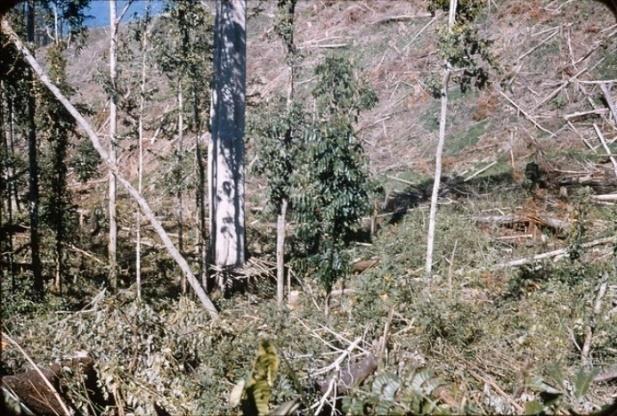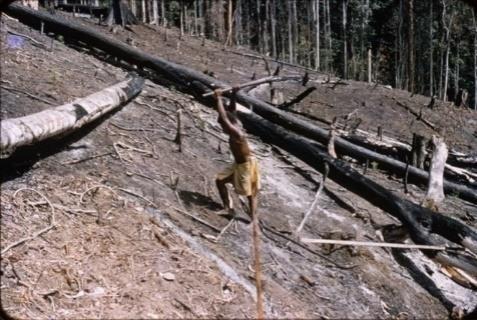
2 minute read
The Environment
Scrub clearing Wau plantations 1960. Photo Credit Des Harries.
Planting at Wau. Photo Credit Des Harries.
Advertisement

In 1960 Forestry at Wau obtained its own ‘lik lik doctor’. His name was Maupa, from Salamaua. As one of the very few local staff who was literate, Maupa also gained the additional duty of meteorological observer at the Wau Forest Station.
The Environment
The contrast of philosophies of the introduced industries practiced in Wau was extreme. On one end of the spectrum was that of gold mining. The allure of this mineral created a drive which seemed to justify, or indeed negate, all detrimental side effects of the extraction process. The Administration, through its Mining Laws, sought only to protect individual leases and ensure that leases paid their royalty on extracted mineral. No requirement was imposed on leases to restore their leases or to mitigate damage to off-site areas. In the Wau/Bulolo minefield the damage done was extreme on both counts. The prime valley flats, with impressive stands of Red Cedar and many other hardwoods, were converted to rock piles. The large-scale sluicing operations on Koranga and Edie Creeks in particular, washed tons of silt into the Bulolo River for decades. The extraction of gold involved pollution from mercury and cyanide. Tailings from underground mining were dumped on the most convenient location. And for all this disaster, most of the profits went offshore.
Agricultural endeavor in the Wau Valley was directed to two forms of cropping. Firstly, coffee plantations became the dominant feature of the Wau Valley on its southern side. These plantations had been amongst the first coffee grown in Papua New Guinea, and in the Wau environment were extraordinarily successful.
Vegetable growing for sale into the major centres of Port Moresby and Lae was the other significant agricultural operation. It relied on airfreight of fresh vegetables, e.g., lettuce and other leaf and root crops, to the European food retailers of these centres. One small dairy herd supplied fresh milk for local consumption. The environmental impact of these crops and grazing was relatively benign.
Forestry operations, through the plantation program, was largely restorative. It is true that the preliminary harvesting of sawlogs and the pre-plantation clear falling and burn off caused short term erosion and disruption of the pristine forest. But under forestry control these scars were healed in a few years. In particular, the network of retained forest cover between plantation compartments, along creek lines and on slopes deemed too steep for plantations,







